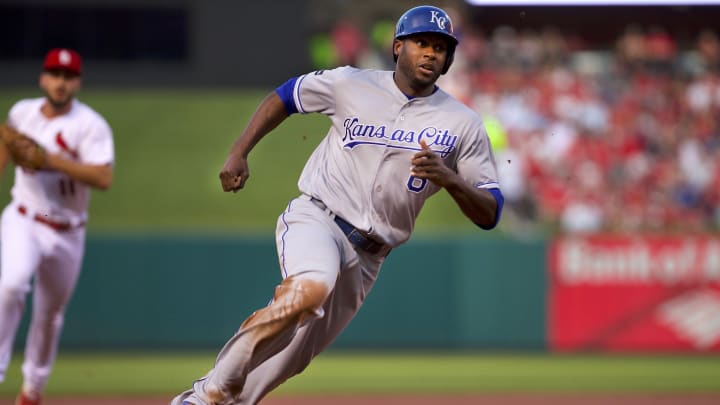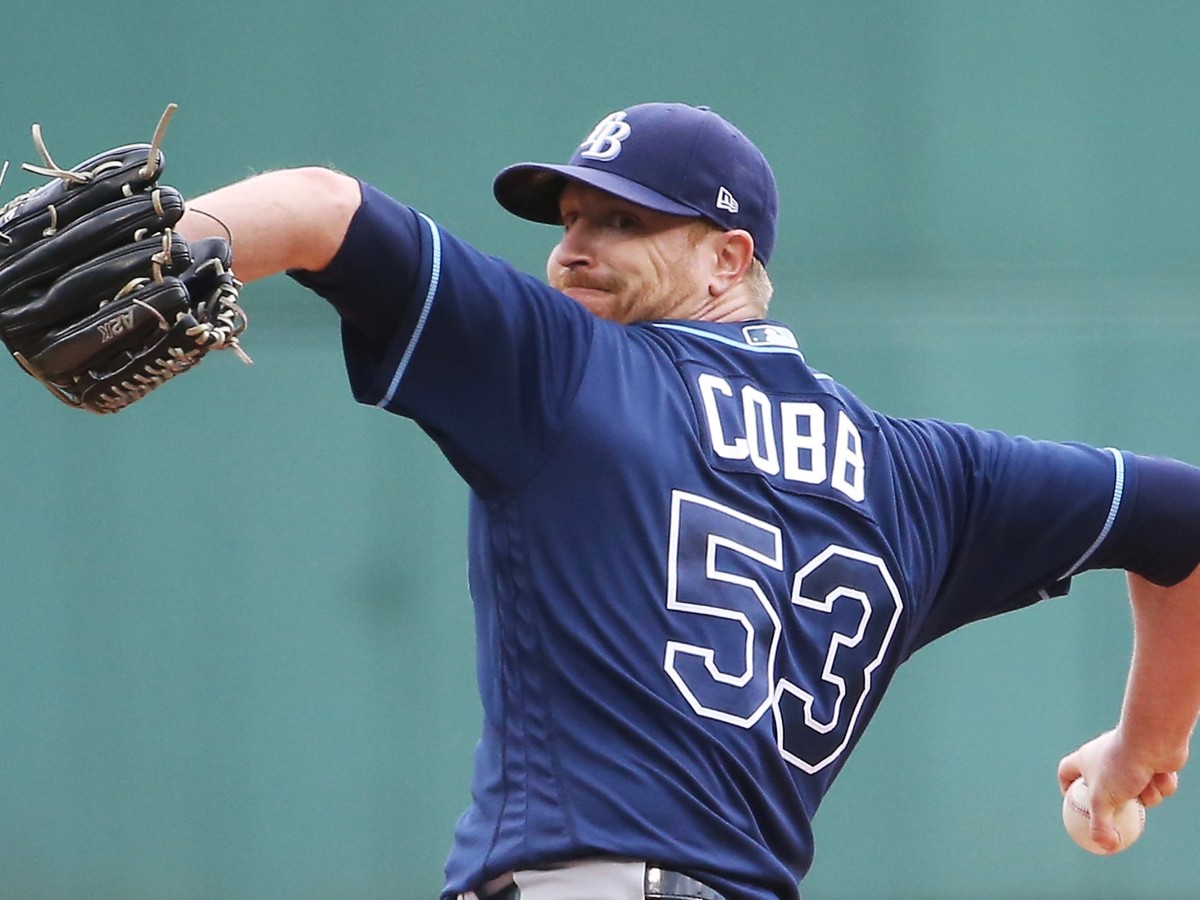The 31st Team: How Many Games Would a Team Composed Entirely of Free Agents Win?

Usually, when you try to compile a team of unsigned free agents by this late stage of the offseason, you’re assembling a roster of dregs, backups and old-timers on their last creaky legs. Not so this winter, when a market freeze has stalled free agency to a degree we haven’t seen since the days of open collusion amongst owners. Well over 100 players remain unsigned with less than a month to go before pitchers and catchers report to Florida and Arizona, including some truly big names. Last week, Jay Jaffe ran down some of those top-of-the-market players to examine why they’re still unemployed, but regardless of the reasons, it’s amazing to see the likes of Eric Hosmer, J.D. Martinez and Yu Darvish all waiting for a phone call from a front office as January comes to a close.
In that vein, then, this edition of the Best Available Free Agents Team is decidedly better and easier to put together than years previous. Normally, you’d be slotting in over-the-hill veterans and career minor leaguers into starting spots, or putting together a rotation that would best be described as “Orioles caliber.” This time, you’ve got a former All-Star at nearly every starting position, a rotation that would be one of the 10 best in baseball, and a bullpen that would be the envy of half the league.
But instead of merely cataloguing who gets the nod at each position, I want to see how this team would fare as an actual flesh-and-blood assembly. To wit, I’ve picked 25 free agents and created a full roster—nine starters, including a DH; five starting pitchers; a seven-man bullpen; and a four-player bench—to see just how good a team you can still build with what’s left this offseason, and how it would stack up to last year’s best. Note that I won’t be proposing any contract figures, as I’m acting as if I’m the GM of a team with no salary concerns, either in terms of short-term spending or long-term commitments. The point here is to build the best team that I can, not the most efficient or cost-effective; money doesn’t matter. (All 2017 WAR figures are via Baseball-Reference.)
Starting Nine
Catcher: Jonathan Lucroy (0.6 WAR)
Per usual, the catcher market has been one of the weaker ones this offseason, with only 16 players available this winter at that position and nine of those already signed. Lucroy isn’t much of a catch at 31 and coming off a mediocre 2017 season split between Texas and Colorado (where he somehow hit only six homers total in those two cities), but the two-time former All-Star is still the best of the lot here.
First base: Eric Hosmer (4.0 WAR)
Hosmer may never become the superstar he was pegged to be when the Royals took him with the No. 3 pick of the 2008 draft, but that doesn’t matter. He’s still a solid hitter who plays Gold Glove-caliber defense, and he’s young to boot (he won’t turn 29 until October).
Second base: Neil Walker (1.5 WAR)
Like catcher, the keystone doesn’t offer much in terms of desirable options this winter, instead presenting a motley cast of veterans, utility men and career backups. The top choice here is Walker, who has struggled to stay on the field the last two years—just 111 games played in 2017 and 113 in ’16—due to a chronic back condition but can be an impact hitter when healthy. He’s not a long-term solution, but that shouldn’t take away from what he can do well.
Breaking Down the 2018 Hall of Fame Voting and What it Means for the Future
Third base: Mike Moustakas (1.8 WAR)
Moustakas has plenty of flaws, namely his mediocre defense and free-swinging ways. But his power plays pretty much anywhere, and like Hosmer, he’s still on the younger side for a free agent, as he’ll turn 30 in October.
Shortstop: Eduardo Nuñez (1.2 WAR)
The versatile Nuñez probably doesn’t have the glove to be a regular shortstop (or a full-time starter at any position, really). There aren’t many better options here, though: J.J. Hardy has seen his offense collapse due to injury and age; Alcides Escobar is a brilliant defender but a historically lousy hitter; and Jose Reyes is well past his prime. Nuñez gets the job by default, though his speed and contact skills are still valuable no matter where he plays.
Rightfield: J.D. Martinez (4.2 WAR)
In an ideal world, Martinez would ditch his glove for good and take over some lucky team’s DH spot for the next six or seven years. On this traveling troupe of unsigned All-Stars, though, he has no such luck. The rest of the crop in rightfield is either just as defensively inept as he is or can’t match his offense despite being good with the leather. No matter: Martinez is such a good hitter that his bat more than makes up for his fielding foibles, and he makes for an imposing cleanup hitter in any lineup.
Centerfield: Lorenzo Cain (5.3 WAR)
Besides, when you have Cain patrolling center, how good do your corner outfielders really need to be? There’s plenty of risk with Cain given that his game is predicated heavily on speed, but there’s more to him than his legs. He’s a patient hitter who rips line drives with aplomb, and despite his advanced age (he’ll be 32 in April), he’s still capable of making things happen on the base paths. He’s a terrific leadoff option for this team.
Leftfield: Jarrod Dyson (2.6 WAR)
As far as hitters go, Dyson doesn’t offer all that much. Defensively, though, he’s a wizard, and he complements that prowess with game-changing speed on the bases. He may not be the sexiest name for leftfield, but while there are plenty of corner outfielders still on the market, most are too old or too defensively suspect to trust as full-timers. Plug Dyson in and never again worry about a ball falling between him and Cain.
Designated hitter: Logan Morrison (3.6 WAR)
The second-best first baseman still available, Morrison has been greeted with a resounding silence on the free-agent market despite setting career highs in homers, OPS+ and WAR last season with the Rays. That may have been a misleading contract year for the 30-year-old, but that doesn’t matter to me. His performance makes him an easy choice to slot in as the DH.

Starting rotation
Yu Darvish (3.9 WAR)
Jake Arrieta (1.9 WAR)
Alex Cobb (2.4 WAR)
Lance Lynn (3.1 WAR)
Andrew Cashner (4.6 WAR)
Few teams can offer a better 1–2 punch than Darvish and Arrieta or a more dependable third starter than Cobb. And while Lynn and Cashner are shakier future bets (particularly the latter, whose stellar 2017 was built on a terrifyingly low strikeout-per-nine rate of 4.6), they won’t kill you as fourth and fifth starters. Besides, if you don’t like the likes of either, the market has plenty of other solid veteran choices, such as Jaime Garcia, John Lackey, and R.A. Dickey.
Bullpen
Greg Holland (1.4 WAR)
Tony Watson (0.4 WAR)
Seung-hwan Oh (-0.1 WAR)
Bud Norris (0.4 WAR)
David Hernandez (0.1 WAR)
Matt Albers (2.5 WAR)
Jesse Chavez (-0.1 WAR)
Relievers are perhaps the most picked-over group of players in this offseason, as virtually every top-tier closer or setup man has found a new home. Still, the leftovers are plenty appetizing. Holland has lost a slight step from his All-Star days in Kansas City, but he’s the easy choice as the closer. Watson flourished with the Dodgers after being traded there from Pittsburgh and will be my eighth-inning bridge. Oh and Norris are high-variance arms with a lot of upside and plenty of blowup potential, but both make for worthwhile late-inning flyers. Hernandez and Albers can pile up strikeouts in middle relief. And Chavez is the swingman/long relief option who can cover for injured starters or save a tired bullpen.
Bench
Alex Avila (2.7 WAR)
Todd Frazier (3.4 WAR)
Jose Reyes (-0.6 WAR)
Carlos Gomez (1.8 WAR)
Avila’s career looks to be back on track after concussions nearly ended it; he makes for a perfect veteran backup to Lucroy. Frazier’s ability to play either corner infield spot, as well as his prodigious power, earn him a backup job. Reyes isn’t a starter any more, but he at least offers versatility. And I’m willing to take a flyer on Gomez rediscovering his All-Star form as a reserve, especially since with Cain and Dyson as starters, I don’t need a glove-first fourth outfielder.
So how would this team actually do? Baseball-Reference has a handy calculation for translating cumulative WAR into team record: Take the total WAR for hitters and pitchers and add it to the result of .294 multiplied by the number of games played (with .294 representing the winning percentage of a theoretical team comprised entirely of replacement-level players in 2017). Our team was worth a total of 52.6 WAR. Plug that into the formula above, and you get a squad that has an expected record of 100–62.
This is admittedly a quick and dirty way of looking at things (and note that B-Ref’s WAR to wins formula doesn’t always line up exactly with actual outcomes; the 2017 Yankees, for example, won 91 games, but their WAR totals are in line with a 101-win team, which is almost bang on their Pythagorean record of 100–62).
Baseball Hall of Fame: Chipper Jones, Vlad Guerrero, Jim Thome and Trevor Hoffman Join Class of 2018
Here’s another way of considering it: Our Free-Agent All-Stars lineup produced 32.1 WAR, which would’ve been second-best among all offenses last year, well behind the Astros (39.8) but comfortably ahead of the Dodgers (30.0). The rotation and bullpen, meanwhile, would have been sixth at 20.5, sandwiched between Boston (21.8) and Toronto (18.3) and again ahead of Los Angeles (also 18.3). In other words, our team would have produced more cumulative WAR than the 104-win Dodgers, who won the NL West and the pennant with ease.
There are plenty of caveats here. This is only a 25-man roster, so the overall WAR figures would dip when you add in the random players that fill out a team throughout the season due to injury or ineffectiveness. This group is a bit rough defensively, particularly on the left side of the infield. And there’s no guarantee that everyone here matches his 2016 output (though a few here could conceivably improve). But as far as a free-agent team built in late January goes, you could do far worse than this.
Here, though, is what I would love to see if, by the middle of February, these players remain unsigned: Unite and form their own team—a 31st MLB franchise that will make every GM rue the day they didn’t make an offer. These stars may be unwanted now, but they can turn the tables when they rampage to 100 wins and raise the Commissioner’s Trophy this November. Take that, cheapskate owners.
